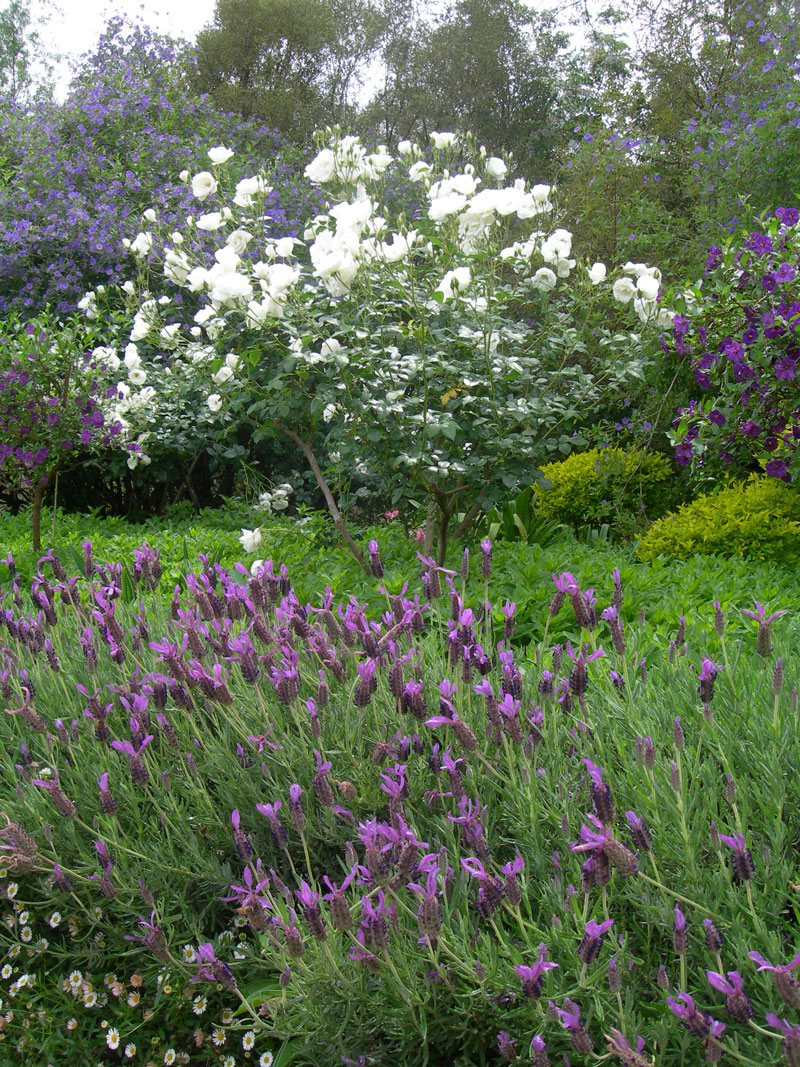There are many benefits to introducing other plants to your rose garden. Water saving and pest repelling are just two benefits of companion planting.
MORE COMPANION PLANTING: Benefits of companion planting
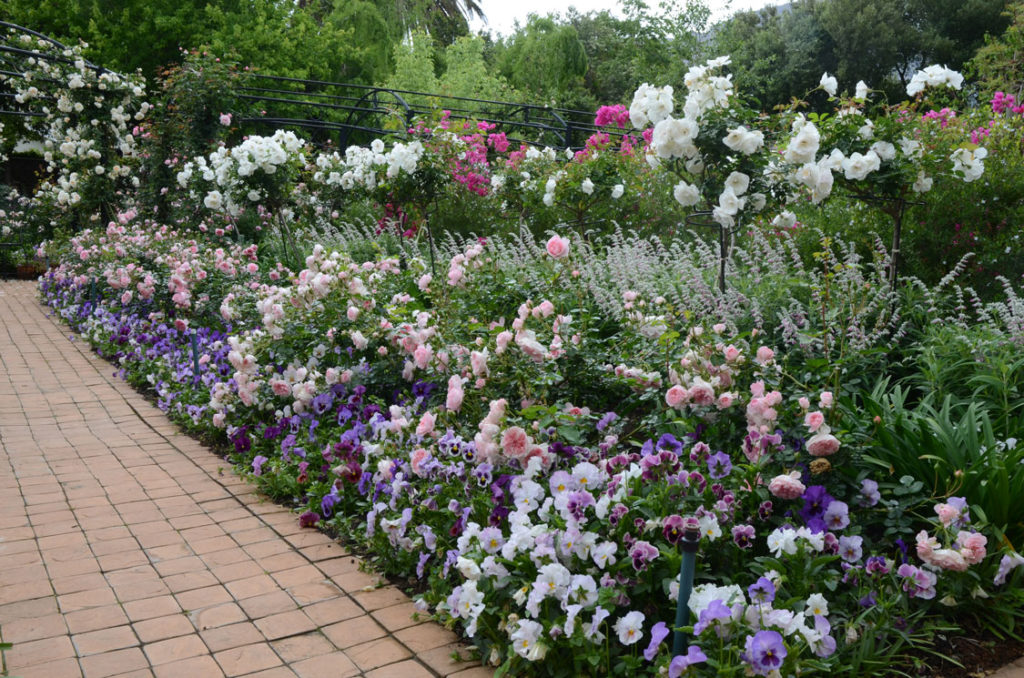
In this border, standard roses are underplanted with Russian sage, ‘My Granny’ roses and massed pansies.
While roses of course will always be the star of the show, other plants can be used to enhance their beauty, hide the bare stems, repel pests and keep the soil cool.
Perennials
Combine perennials and large shrub roses in mixed borders. Panarosa varieties make a statement on their own, so plant them singly. Group hybrid teas and floribundas in groups of three.
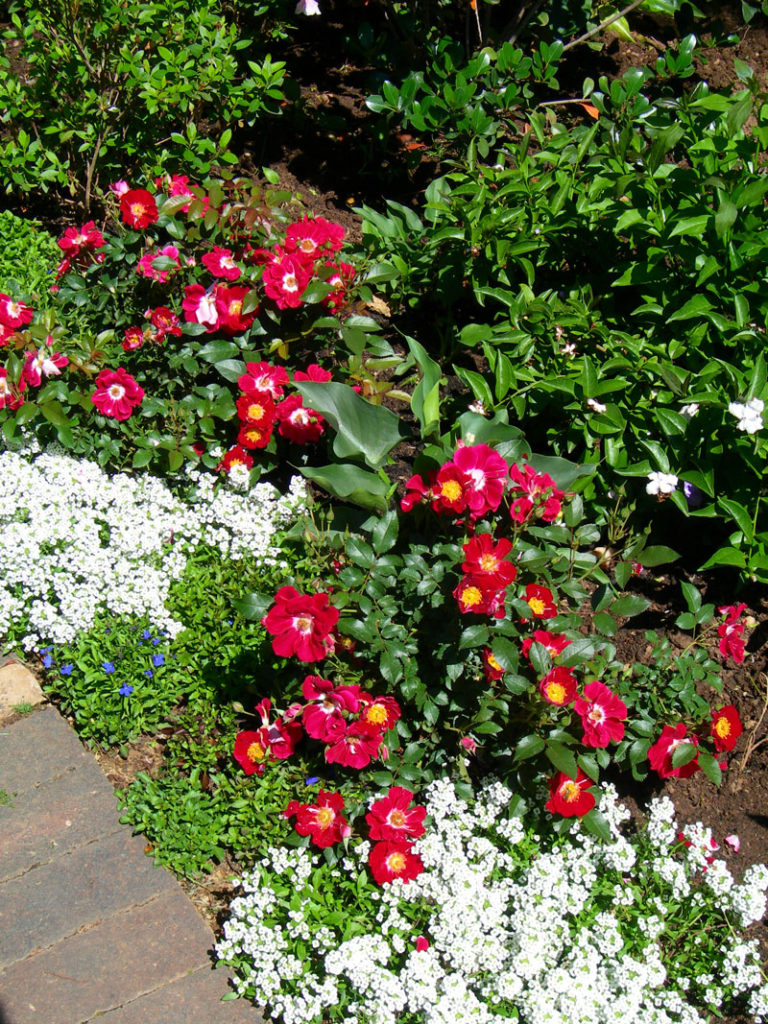
Alyssum and lobelia double as mulch and seasonal colour under ‘Red Manikin’ roses.
Ideal companions: Perennials like alstroemerias, anchusa (Cape forget-me-not), catmint (Nepeta mussinii), campanula, delphiniums, various daisies, gaura, irises, lavender, scabiosa and garlic (tulbaghia).
Growing tips: Space large roses at least 1,5m apart. During the first year or two, don’t allow any competing growth to touch the bush until it has developed well above the perennials. When pruning in winter, don’t cut back to knee height but trim lightly, leaving at least 30cm above the tips of the perennials. During the growing season, don’t pick too many long-stemmed blooms at once as this reduces the balance of leaves and lessens the rose’s vigour.
Mulch for companion planting
Groundcovers make an excellent living mulch for roses and they also increase humidity at leaf and bloom level. Just make sure that they don’t grow into the rose bush.
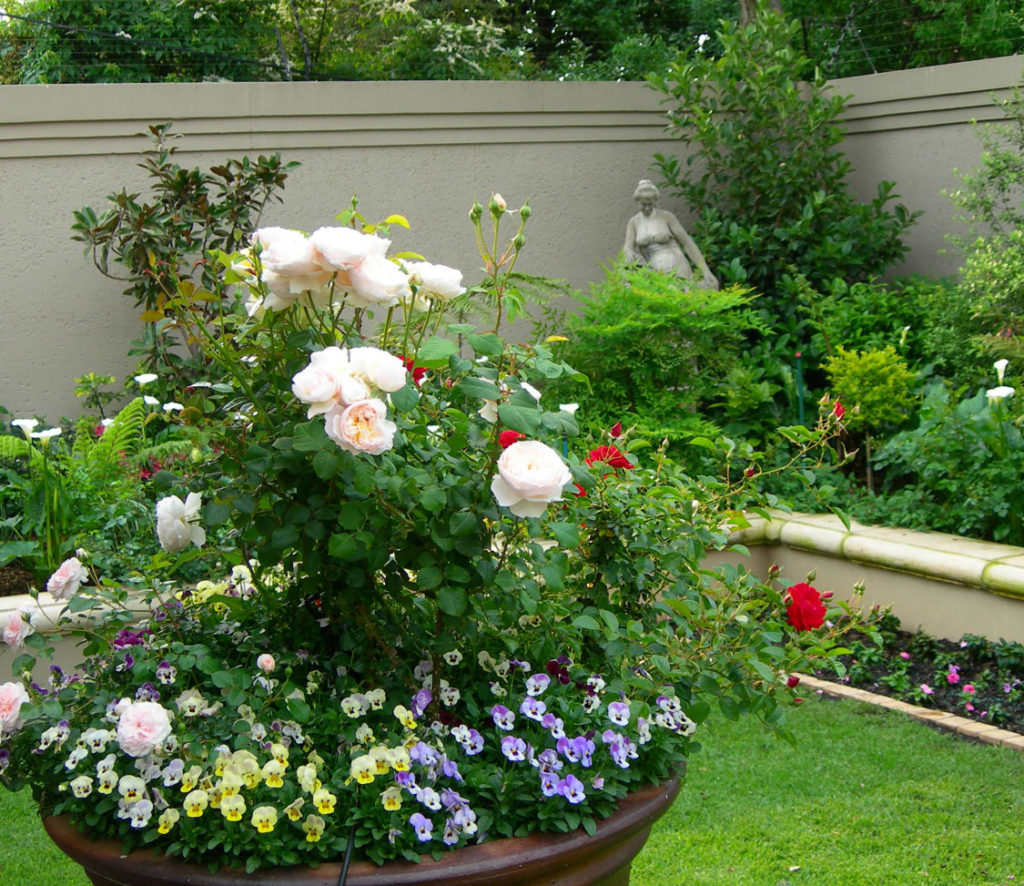
Clipped Duranta ‘Sheena’s Gold’, gaura, forget-me-nots, foxgloves and rosemary act as mulch, seasonal colour and repel insects.
Ideal companions: Suitable varieties include ajuga, alyssum, calamint, echeveria, mazus, Australian violets, violets, evening primrose, snow in summer (Cerastium tomentosa), lamium, lamb’s ears (Stachys byzantina) and mondo grass. Avoid those with dense and spreading root systems that’ll compete for food and water.
Growing tips: If roses are planted 80cm apart they’ll shade the soil so use shade lovers like ajuga, lamium or some plectranthus varieties. For flowering groundcovers, plant the roses about 1,5m apart.
Annuals
Low-growing borders filled with annuals liven up bare rose beds especially in winter after pruning, and remain colourful until October when the roses are also in bloom.
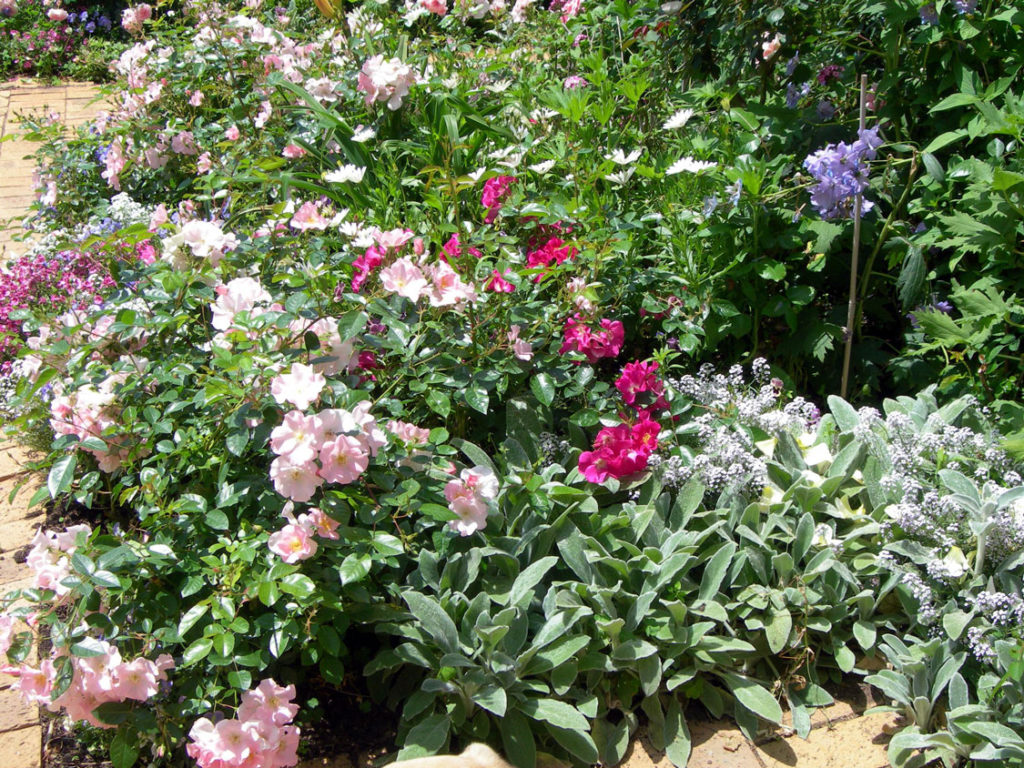
Companion planting: Silvery lamb’s ear and alyssum complement ‘Johannesburg Garden Club’ and ‘Duncan’s Rose’.
Ideal plants: In summer, use varieties that flower continuously, like alyssum, ageratum, begonias, dwarf dahlias, impatiens, marigolds, mimulus, and verbena. White alyssum is a favourite because it’s ground hugging, flowers non-stop, self-seeds and fills the air with scent. In winter, plant Namaqualand daisies, pansies, primulas, petunias, violas and poppies. Iceland poppies are the most suitable because they don’t have a lot of leaves that could interfere with sprouting.
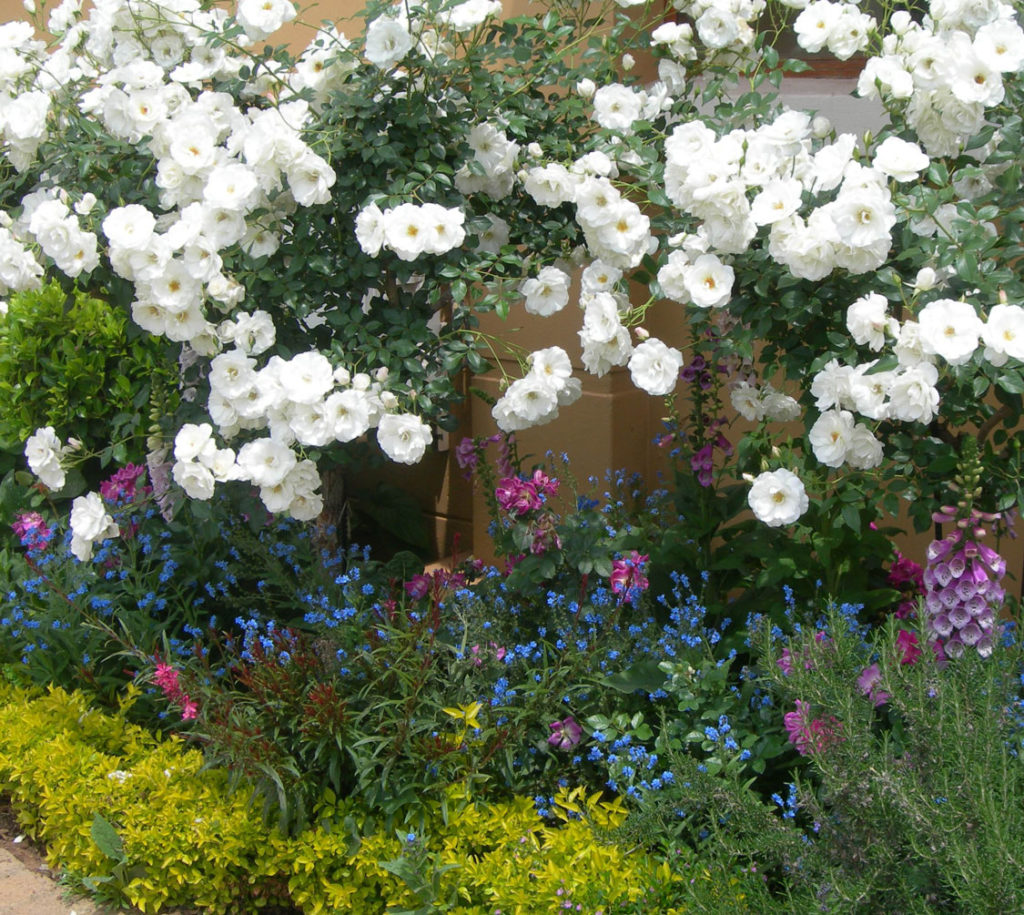
Companion planting: Low-growing violas hide the bare stems of ‘Garden and Home’ rose during winter and spring.
Growing tips: Create a narrow bed between the edge of the lawn and the roses. Make a note of the drip line of the rose (the outer extent of its growth before pruning) and only plant beyond this. Dig in plenty of compost so there’s no competition for nutrients.
Attracting pollinators
Planting roses and vegetables together is nothing new. They rubbed shoulders in traditional English and French gardens where roses were planted to attract pollinators, especially bees, to fertilise the veggies. Both grow best in full sun, like level beds, fertile soil and need regular, ample watering.
READ MORE: Planting a bee-friendly garden
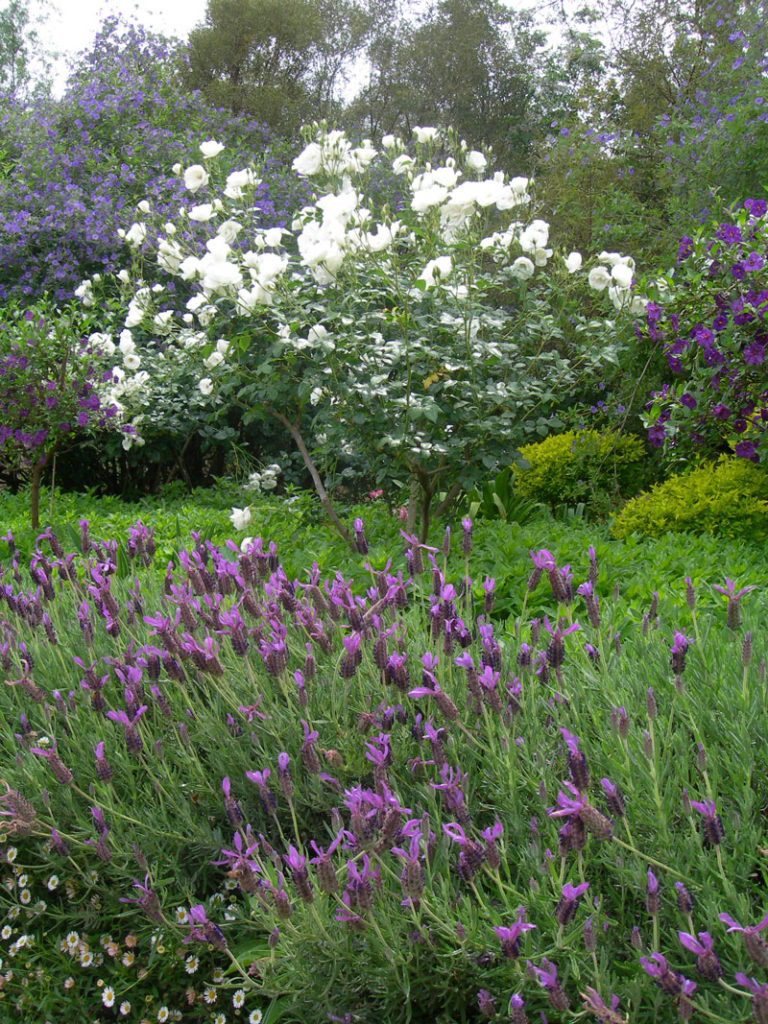
Companion planting: Aromatic Lavandula stoechas confuses insects keeping them away from the ‘Iceberg’ blooms.
Ideal companions: Select roses that free up ground space like standards and upright spire roses for the back of veggie beds. Or use climbers and shrub roses that can be trained up a pillar, on a trellis or over an archway. In front of the roses, grow compact veggies such as beetroot, carrots, cabbage, kale, lettuce, Swiss chard, radishes and the smaller varieties of chillies and sweet peppers, which won’t overwhelm the roses and block out the sun.
Growing tips: Choose organic insecticides like Ludwig’s Insect Spray that can be safely used on both. Fertilise regularly with Vigorosa, especially leafy greens, brinjals and peppers.
Good idea: Set aside part of the veggie garden for hybrid tea roses to provide fresh cut flowers for eight months of the year.
Insect repellents
“Grow a variety of strong-smelling plants alongside roses to confuse insects,” advises expert rose grower, Ludwig Taschner. “Garlic is excellent, but because the strong-smelling foliage is way below the flowers – the target of the insects – you need to include other plants as well.
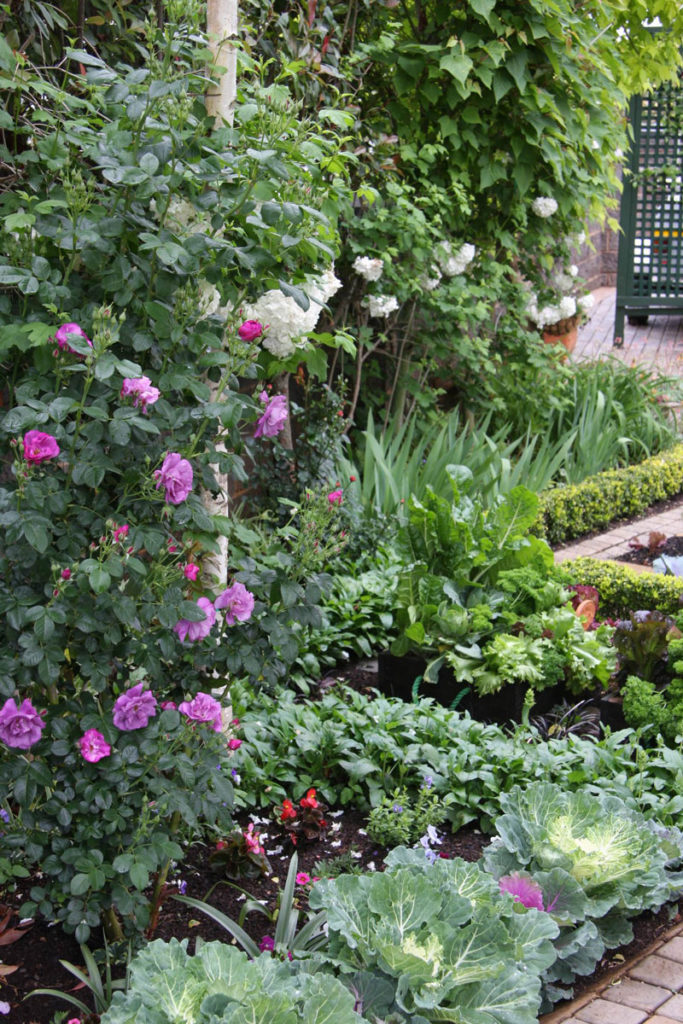
Spire roses ‘Rhapsody in Blue’ and ‘Climbing Iceberg’ attract essential pollinators like bees to the vegetable and herb garden.
Ideal companions: Herbs with strongly aromatic leaves like ‘Margaret Roberts’ lavender, feverfew, perennial basil, pyrethrum, rue, Russian sage (perovskia), santolina, scented geraniums, southernwood, tansy and wormwood.
Growing tips: Plant santolina instead of buxus as a low hedge around formal rose beds. After clipping, sprinkle the leafy offcuts amongst the roses as insect-repelling mulch.
Rose expert Ludwig Taschner’s companion planting tips and hints
- Give roses room to grow within a bed.
- Prune roses lightly so that the new growth starts above the level of the other plants and is the first to receive the sun.
- Supply enough water and nutrients for both the rose and the plants growing around it.
- Keep an open space around the rose stems, especially when planting groundcovers so that water and nutrients can penetrate.
- Don’t let surrounding plants crowd the roses or climb into the rose itself. If its leaves are smothered, the rose will eventually die.

